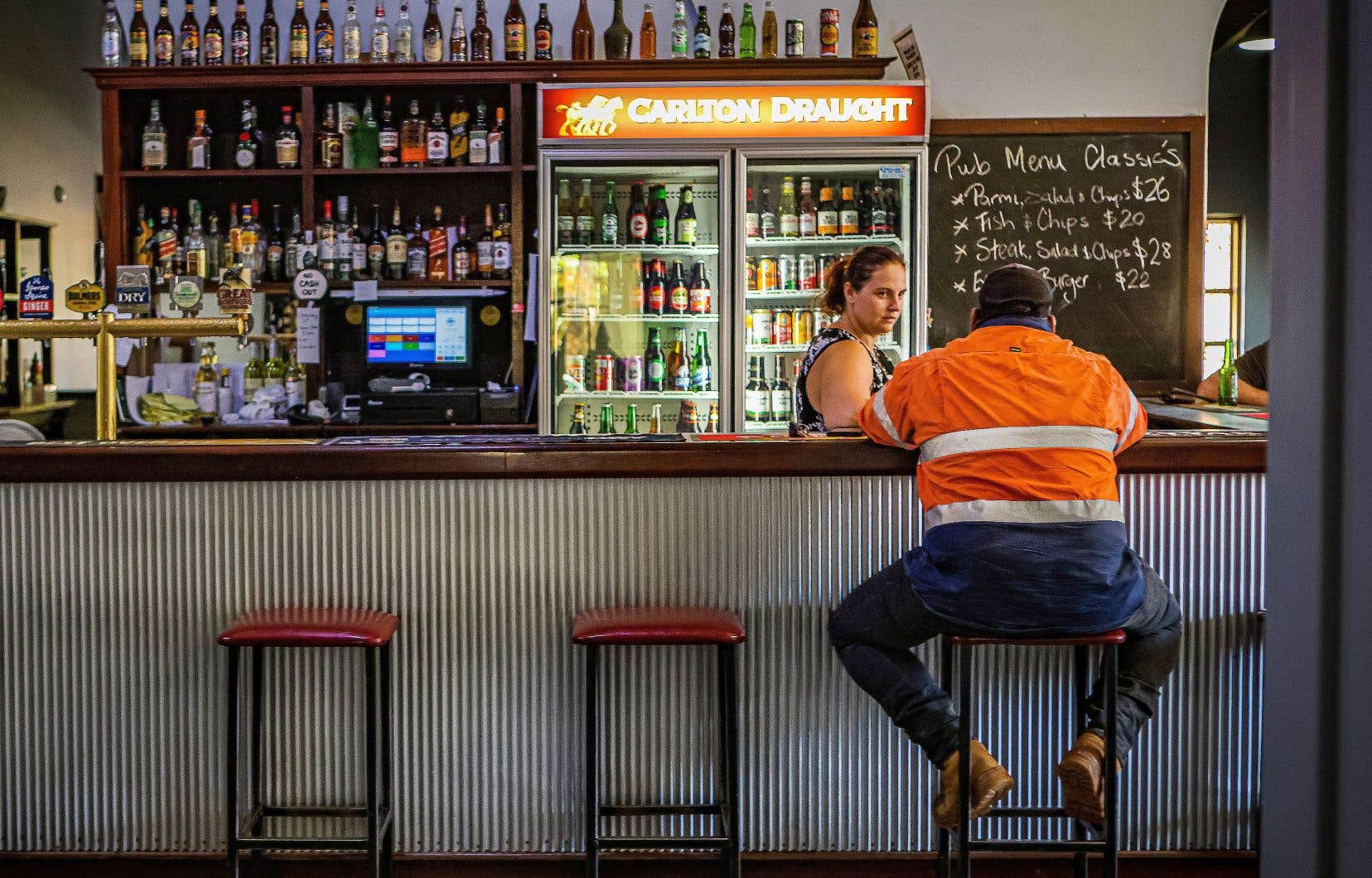Australia is the world’s largest producer of lithium — a highly sought-after mineral for the production of electric car batteries. At the heart of this rush for “white gold”, a village in the west of the country is home to the largest hard rock lithium mine in the world. Incursion.
Greenbushes. Just under three hours’ drive south of Perth. In the deafening silence of the place, it is difficult to believe that we are at one of the world’s crossroads for the electrification of transport.
In the middle of the week, on a Tuesday, the place is deserted. The few commercial buildings are boarded up or empty. Only at the Exchange Hotel can you find a little life. Mine workers, still dressed in their dusty safety gear and bright orange, order pints of beer at the hotel bar.
Colin Gray and his father-in-law, Rodney Holroyd, were recruited a few months ago by a subcontractor from Talison Lithium, the private company that manages the Greenbushes mine. They drive construction trucks on the mine.
“They are good jobs, with good salaries,” says Rodney Holroyd, taking a sip. Without wanting to reveal his income, the worker claims that it increased by $20,000 when he changed jobs.
His daughter, Jessi Gray, behind the bar, explains that they live in Bridgton, a village about 15 kilometers away. “It’s very quiet around here. Most workers only come to Greenbushes for work. They don’t live here,” she explains.
The small village has fewer than 400 inhabitants, while the mine employs more than twice as many people, i.e. more than 800.
Steven Dowling, another bar patron, also works at the mine. The person who supervises operations at the Talison spodumene (aluminum silicate) processing plant does not express particular pride in working in this sector, which is nevertheless essential to the electrification of the global automobile fleet.
“It’s just a damn look to me,” Steven Dowling jokes. “If it was anything other than lithium, it wouldn’t change much. It’s very popular at the moment, but the craze can die down as quickly as it rose if the technology changes,” he believes.
Still, according to current projections, demand for “white gold” is not about to dry up. On the contrary. By 2040, the International Energy Agency expects that, to meet the goals of the Paris Agreement, demand for lithium will be 40 times what it was in 2020.
55% of world production
In the lithium race, Australia is doing well. Although it does not have the largest lithium reserves – they are in Chile – the island continent is currently the leading producer of this mineral, accounting for 55% of world production.
The Greenbushes mine alone accounted for approximately 40% of hard rock lithium production in Australia and 22% of the global market in 2021.
Despite its importance, Talison Lithium does not seek the light. The private company, 51% owned by the Chinese company Tianqi and 49% by the American company Albemarle, is reluctant to open its doors to the media.
A public access perched high still allows you to have an overview of the mining site. At the end of a small street where the village primary school is located, you just have to climb a few steps to gaze at the “Cornwall Pit”. This open-air pit has not been in use since 2003. But, just behind it, we can see the pits in operation and the trucks working.
“Greenbushes has always been a mining town. Tin and tental were extracted there at the time,” says Steven Dowling, the Talison employee we met at the bar.
Mining work, as evidenced by the remains of the “Cornwall Pit”, began in 1888. But it was not until almost a century later, around 1980, that we began to consider the value of lithium which is located in the region.
“It’s a very large site. There are three other excavation pits that are active, in addition to the processing plants,” Mr Dowling explains.
A light metal with heavy geopolitical implications
The lightest metal in Mendeleev’s periodic table of elements is the object of all desire. Lithium, like cobalt, graphite, nickel and rare metals, is classified in the family of critical minerals. And for good reason: they are not only essential for the production of electric car batteries, solar panels or wind turbines, they are also crucial for defense technologies.
Australian dominance in lithium production thus gives it “a strategic position on the international scene”, underlines Marina Zhang, associate professor at the Institute on China-Australia Relations at the University of Technology, Sydney.
However, currently almost all lithium mined in Australia is sent to China. A dependence that the Australian government hopes to limit over the coming years by turning to other markets.
Australia, in the same way, in particular, as Canada or the European Union, has joined the Mineral Security Partnership (“ Minerals Security Partnership) in 2022. The initiative, launched by the United States, aims precisely at this objective: to strengthen critical mineral supply chains between partner countries.
Professor Zhang says Australia finds itself “a bit stuck in a competition” between superpowers America and China, each seeking to secure their supplies of critical minerals.
“Lithium exports are a financial windfall for Australia. Is there an advantage to producing batteries here rather than in China? There is the argument of security, to reduce the vulnerability of exchanges. On the other hand, from an economic point of view, it cannot be said that Australian batteries would be competitive compared to Chinese batteries, where labor costs less,” says M.me Zhang.
Worker Steven Dowling expresses another point of view. “In this country, this is how we are used to operating: we extract our resources and send them elsewhere. It is also important that we create added value here. »
This report was financed thanks to the support of the Transat-International Journalism Fund.The duty.
